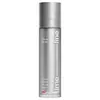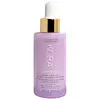What's inside
What's inside
 Key Ingredients
Key Ingredients

 Benefits
Benefits

 Concerns
Concerns

 Ingredients Side-by-side
Ingredients Side-by-side

Water
Skin ConditioningGlycerin
HumectantButylene Glycol
HumectantDicaprylyl Carbonate
EmollientNiacinamide
SmoothingGlyceryl Stearate Citrate
EmollientSqualane
EmollientSaccharide Isomerate
HumectantUrolithin A
Cetyl Alcohol
EmollientAmmonium Acryloyldimethyltaurate/Vp Copolymer
Butyrospermum Parkii Butter
Skin ConditioningHydroxyacetophenone
AntioxidantXanthan Gum
Emulsifying1,2-Hexanediol
Skin ConditioningCaprylyl Glycol
EmollientTocopheryl Acetate
AntioxidantTrehalose
HumectantSodium Phytate
Camellia Sinensis Leaf Extract
AntimicrobialHydrolyzed Opuntia Ficus-Indica Flower Extract
AbrasiveAlcohol
AntimicrobialSodium Lactate
BufferingCarbomer
Emulsion StabilisingCitric Acid
BufferingSodium Citrate
BufferingCoco-Glucoside
CleansingSodium Hyaluronate
HumectantTocopherol
AntioxidantNicotiana Sylvestris Leaf Cell Culture
Skin ConditioningPalmitoyl Tripeptide-1
Skin ConditioningPalmitoyl Tetrapeptide-7
Skin ConditioningWater, Glycerin, Butylene Glycol, Dicaprylyl Carbonate, Niacinamide, Glyceryl Stearate Citrate, Squalane, Saccharide Isomerate, Urolithin A, Cetyl Alcohol, Ammonium Acryloyldimethyltaurate/Vp Copolymer, Butyrospermum Parkii Butter, Hydroxyacetophenone, Xanthan Gum, 1,2-Hexanediol, Caprylyl Glycol, Tocopheryl Acetate, Trehalose, Sodium Phytate, Camellia Sinensis Leaf Extract, Hydrolyzed Opuntia Ficus-Indica Flower Extract, Alcohol, Sodium Lactate, Carbomer, Citric Acid, Sodium Citrate, Coco-Glucoside, Sodium Hyaluronate, Tocopherol, Nicotiana Sylvestris Leaf Cell Culture, Palmitoyl Tripeptide-1, Palmitoyl Tetrapeptide-7
Aloe Barbadensis Leaf Juice
Skin ConditioningWater
Skin ConditioningGlycerin
HumectantRosa Canina Seed Oil
EmollientIsoamyl Laurate
EmollientHelianthus Annuus Seed Oil
EmollientBetaine
HumectantEuterpe Oleracea Fruit Extract
Cetearyl Olivate
Sorbitan Olivate
EmulsifyingLactobacillus Ferment
Skin ConditioningBakuchiol
AntimicrobialXylityl Sesquicaprylate
AntimicrobialLysolecithin
EmulsifyingSclerotium Gum
Emulsion StabilisingLactobacillus
Skin ConditioningCitric Acid
BufferingPotassium Sorbate
PreservativeMedicago Sativa Extract
TonicPullulan
Xanthan Gum
EmulsifyingAnhydroxylitol
HumectantMorinda Citrifolia Fruit Extract
Skin ConditioningCitrus Aurantium Amara Flower Oil
MaskingCocos Nucifera Fruit Extract
EmollientPelargonium Graveolens Flower Oil
MaskingSilica
AbrasiveTocopherol
AntioxidantSodium Benzoate
MaskingBeta-Sitosterol
Emulsion StabilisingSqualene
EmollientSodium Hydroxide
BufferingGeraniol
PerfumingLimonene
PerfumingLinalool
PerfumingFarnesol
PerfumingCitronellol
PerfumingAloe Barbadensis Leaf Juice, Water, Glycerin, Rosa Canina Seed Oil, Isoamyl Laurate, Helianthus Annuus Seed Oil, Betaine, Euterpe Oleracea Fruit Extract, Cetearyl Olivate, Sorbitan Olivate, Lactobacillus Ferment, Bakuchiol, Xylityl Sesquicaprylate, Lysolecithin, Sclerotium Gum, Lactobacillus, Citric Acid, Potassium Sorbate, Medicago Sativa Extract, Pullulan, Xanthan Gum, Anhydroxylitol, Morinda Citrifolia Fruit Extract, Citrus Aurantium Amara Flower Oil, Cocos Nucifera Fruit Extract, Pelargonium Graveolens Flower Oil, Silica, Tocopherol, Sodium Benzoate, Beta-Sitosterol, Squalene, Sodium Hydroxide, Geraniol, Limonene, Linalool, Farnesol, Citronellol
Ingredients Explained
These ingredients are found in both products.
Ingredients higher up in an ingredient list are typically present in a larger amount.
Citric Acid is an alpha hydroxy acid (AHA) naturally found in citrus fruits like oranges, lemons, and limes.
Like other AHAs, citric acid can exfoliate skin by breaking down the bonds that hold dead skin cells together. This helps reveal smoother and brighter skin underneath.
However, this exfoliating effect only happens at high concentrations (20%) which can be hard to find in cosmetic products.
Due to this, citric acid is usually included in small amounts as a pH adjuster. This helps keep products slightly more acidic and compatible with skin's natural pH.
In skincare formulas, citric acid can:
While it can provide some skin benefits, research shows lactic acid and glycolic acid are generally more effective and less irritating exfoliants.
Most citric acid used in skincare today is made by fermenting sugars (usually from molasses). This synthetic version is identical to the natural citrus form but easier to stabilize and use in formulations.
Read more about some other popular AHA's here:
Learn more about Citric AcidGlycerin is already naturally found in your skin. It helps moisturize and protect your skin.
A study from 2016 found glycerin to be more effective as a humectant than AHAs and hyaluronic acid.
As a humectant, it helps the skin stay hydrated by pulling moisture to your skin. The low molecular weight of glycerin allows it to pull moisture into the deeper layers of your skin.
Hydrated skin improves your skin barrier; Your skin barrier helps protect against irritants and bacteria.
Glycerin has also been found to have antimicrobial and antiviral properties. Due to these properties, glycerin is often used in wound and burn treatments.
In cosmetics, glycerin is usually derived from plants such as soybean or palm. However, it can also be sourced from animals, such as tallow or animal fat.
This ingredient is organic, colorless, odorless, and non-toxic.
Glycerin is the name for this ingredient in American English. British English uses Glycerol/Glycerine.
Learn more about GlycerinTocopherol (also known as Vitamin E) is a common antioxidant used to help protect the skin from free-radicals and strengthen the skin barrier. It's also fat soluble - this means our skin is great at absorbing it.
Vitamin E also helps keep your natural skin lipids healthy. Your lipid skin barrier naturally consists of lipids, ceramides, and fatty acids. Vitamin E offers extra protection for your skin’s lipid barrier, keeping your skin healthy and nourished.
Another benefit is a bit of UV protection. Vitamin E helps reduce the damage caused by UVB rays. (It should not replace your sunscreen). Combining it with Vitamin C can decrease sunburned cells and hyperpigmentation after UV exposure.
You might have noticed Vitamin E + C often paired together. This is because it is great at stabilizing Vitamin C. Using the two together helps increase the effectiveness of both ingredients.
There are often claims that Vitamin E can reduce/prevent scarring, but these claims haven't been confirmed by scientific research.
Learn more about TocopherolWater. It's the most common cosmetic ingredient of all. You'll usually see it at the top of ingredient lists, meaning that it makes up the largest part of the product.
So why is it so popular? Water most often acts as a solvent - this means that it helps dissolve other ingredients into the formulation.
You'll also recognize water as that liquid we all need to stay alive. If you see this, drink a glass of water. Stay hydrated!
Learn more about WaterXanthan gum is used as a stabilizer and thickener within cosmetic products. It helps give products a sticky, thick feeling - preventing them from being too runny.
On the technical side of things, xanthan gum is a polysaccharide - a combination consisting of multiple sugar molecules bonded together.
Xanthan gum is a pretty common and great ingredient. It is a natural, non-toxic, non-irritating ingredient that is also commonly used in food products.
Learn more about Xanthan Gum